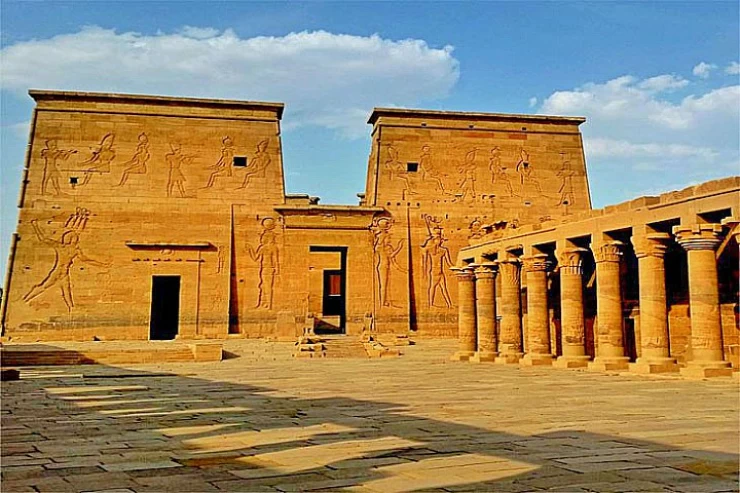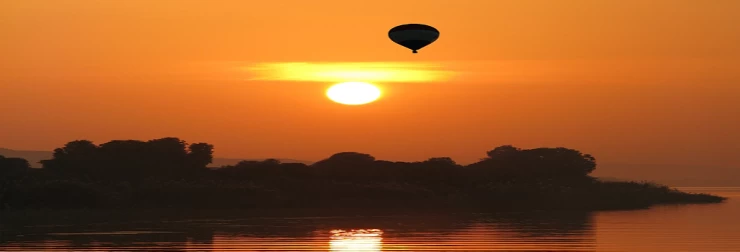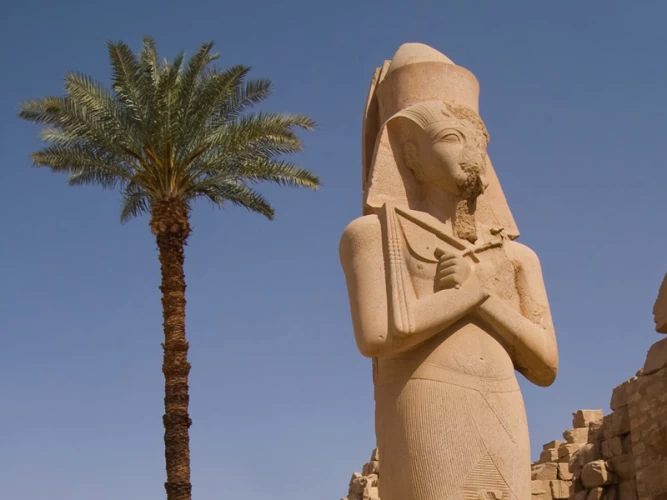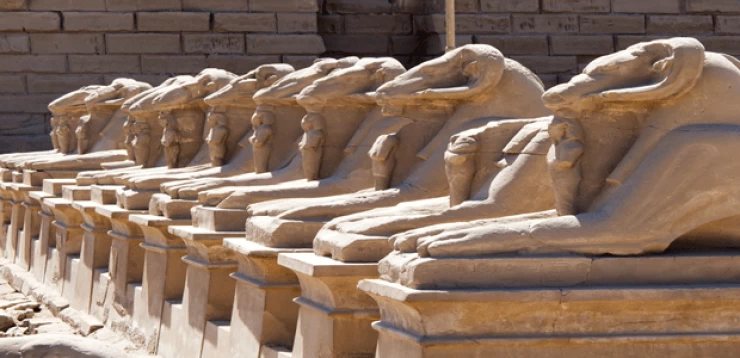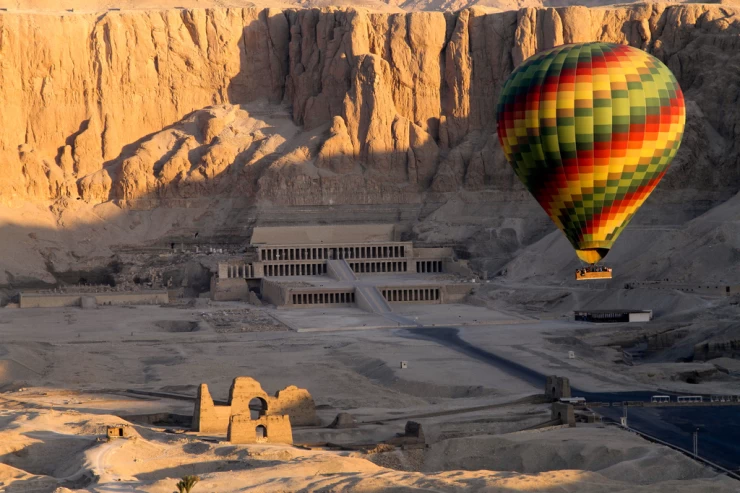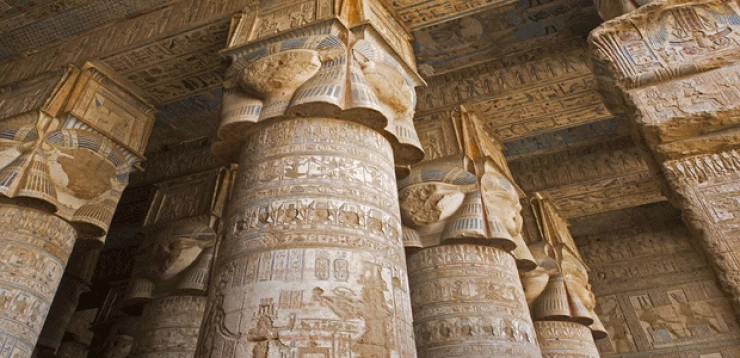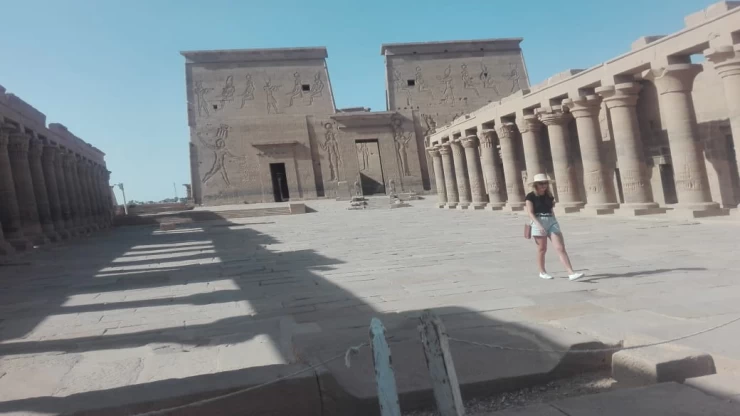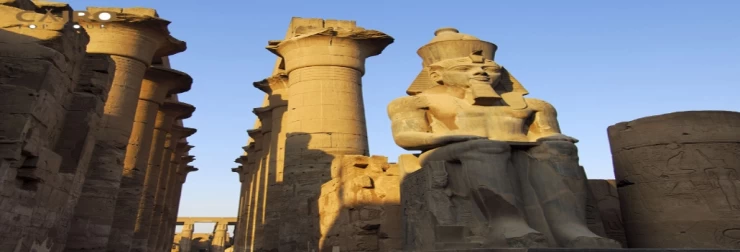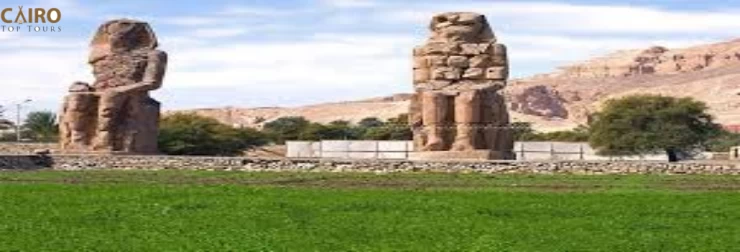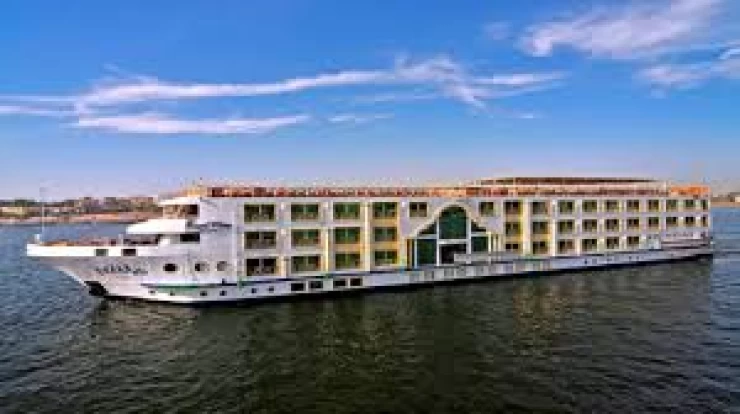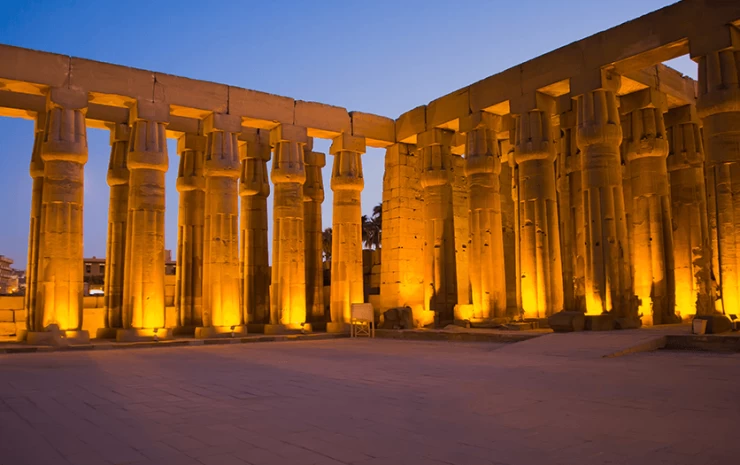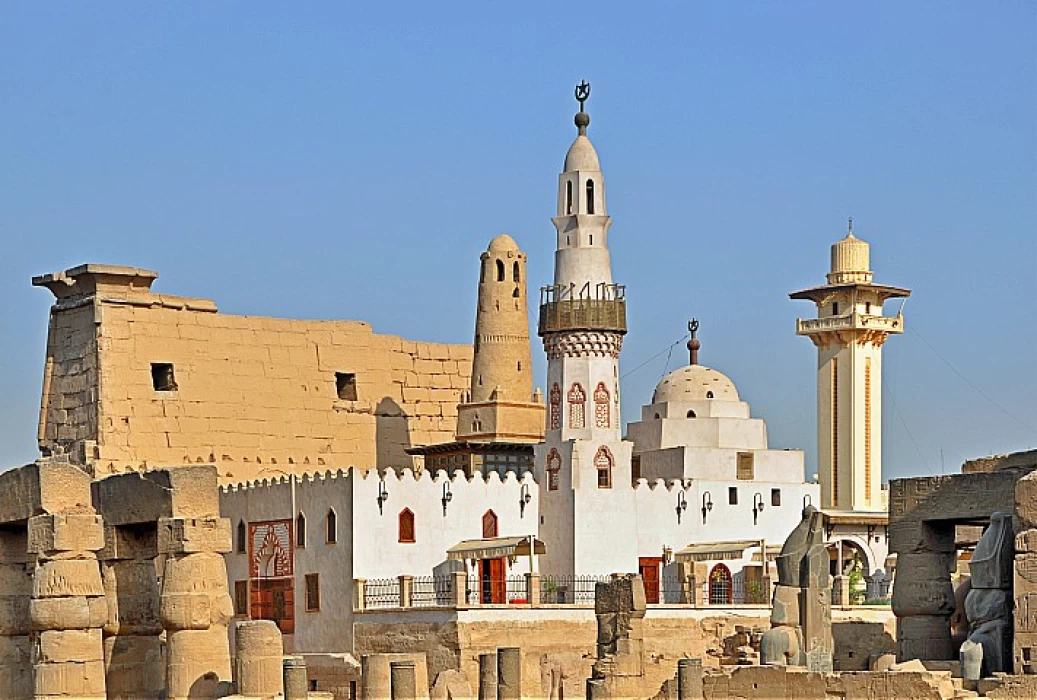
The Mosque of Abu'l Haggag at Luxor Temple
The Mosque of Abu'l Haggag at Luxor Temple
One of the most famous mosques in Luxor and Upper Egypt, the Luxor Sufi Pole Mosque dates back to the venerable scholar Yusuf bin Abdulrahim bin Isa al-Zahid, who was born in the late sixth century in the city of Baghdad and came from there to Luxor in the Ayyubid era.
In Ramadan, the mosque will host several religious activities, organized by the Luxor Endowments Directorate, and science circles in conjunction with Al-Azhar scholars. Outside the mosque, Sufi schools are participating in praise circles for the Prophet's biography, religious chanting, and praise of the Prophet (peace be upon him).
Luxor's Abul Hajjaj Square is home to many events organized by the Culture Palaces Authority, as well as other cultural events, folk arts and Ramadan cultural nights. When the Sufi pole Abu al-Hajjaj came to Luxor, at that time Luxor was owned by a Coptic princess called “Therese bint al-Qums”, so Abu al-Hajjaj wanted to own a piece of land next to the Luxor Temple, so he asked her to give him that piece, which is the size of a camel's skin, and she agreed immediately As a result, he made ropes of camel skin that encircled the entire city, including the ruins of a church built on the Luxor Temple, and thus the Abu al-Hajjaj Mosque in Luxor embraces three civilizations, “Pharaonic, Islamic and Coptic.”
After the death of Sidi Abu Al-Hajjaj, his son Sheikh Ahmed Najm built a mosque in memory of his father in 658 AH-1286 AD over the ruins of the Luxor Temple, indicating that the Abu Al-Hajjaj Mosque has a dome, called the minaret, consisting of three layers, and at the top of it is a group of windows and openings.
It is considered one of the unique Islamic monuments, and the entrance to the mosque overlooks the Luxor Temple, and has inscriptions and drawings, recording the history of its construction, in terms of the old minaret that was built in the Mamluk era, and the modern minaret, which was built in the Abbasid era.
The mosque is described as having all 18 of its interior columns inscribed with ancient Egyptian writings, and the artist was creative in covering the columns with a sandstone mortar to preserve the inscriptions and decorations from destruction and distortion.
The mosque mixes three civilizations, as it belongs to the Islamic civilization, but it was built on the ruins of a church built over a Pharaonic temple, so as you pray inside the mosque, you find in front of you a hollow oyster in one of the ancient temple columns and you see a frieze with ancient Egyptian inscriptions and writings, and around and inside many columns with hieroglyphic writings and scenes.
Latest Articles
Admin
Aswan Governerate in Egypt
One of Egypt's southern governorates is Aswan Governorate. The city of Aswan serves as its capital. At a latitude of 22 north of the equator (also known as the Tropic of Cancer), it is bounded to the north by the Qena Governorate, to the east by the Red Sea Governorate, to the west by the New Valley Governorate, and to the south by the Republic of Sudan.
Admin
Luxor Governorate Egypt
The capital of the Arab Republic of Egypt is Luxor City, which was once known as "Thebes City" because it served as Egypt's capital during the Pharaonic era. It is situated in the South Upper Egypt region, approximately 670 kilometers from the capital Cairo from the south. It is bordered on the north by Qena Governorate, on the south by Aswan Governorate, on the east by Red Sea Governorate, and on the west by New Valley Governorate.
Admin
History of kafr El Sheikh Governorate
Kafr El Sheikh Governorate is an Egyptian governorate, located in the northernmost part of Egypt in the Nile Delta, with Kafr El Sheikh as its capital. It had a population of 3,172,753 in 2015 and an area of 3,748 km². Its entire area is located north of the delta and overlooks the Mediterranean Sea. The main economic activity of the residents of the governorate is agriculture and fishing, especially the southern lands of the governorate and the lands overlooking the Nile River - Rosetta Branch.
Admin
Egypt's New Administrative Capital
The New Administrative Capital is located between the Cairo-Suez and Cairo-Ain Sokhna roads, 60 km from Cairo and the same distance from Ain Sokhna and Suez. The New Administrative Capital is located on the border of Badr City, in the area between the Cairo-Suez and Cairo-Ain Sokhna roads, just after New Cairo, Mostakbal City and Madinaty.
Admin
Al Gharbia Governorate
Gharbia Governorate is one of the governorates full of archaeological sites, whether they are places or facilities (mosques, churches), as the governorate is a destination for visitors to these places throughout the year, whether they are Egyptians from the different governorates.
Admin
Hamata Islands (Qulaan Archipelago) in Marsa Alam
The Hamata area, south of Marsa Alam in the Red Sea, is one of the most important parts of the Wadi El Gemal Reserve, whether in the desert or the sea. It was named after the sorrel plant, which was distorted to Hamata.






